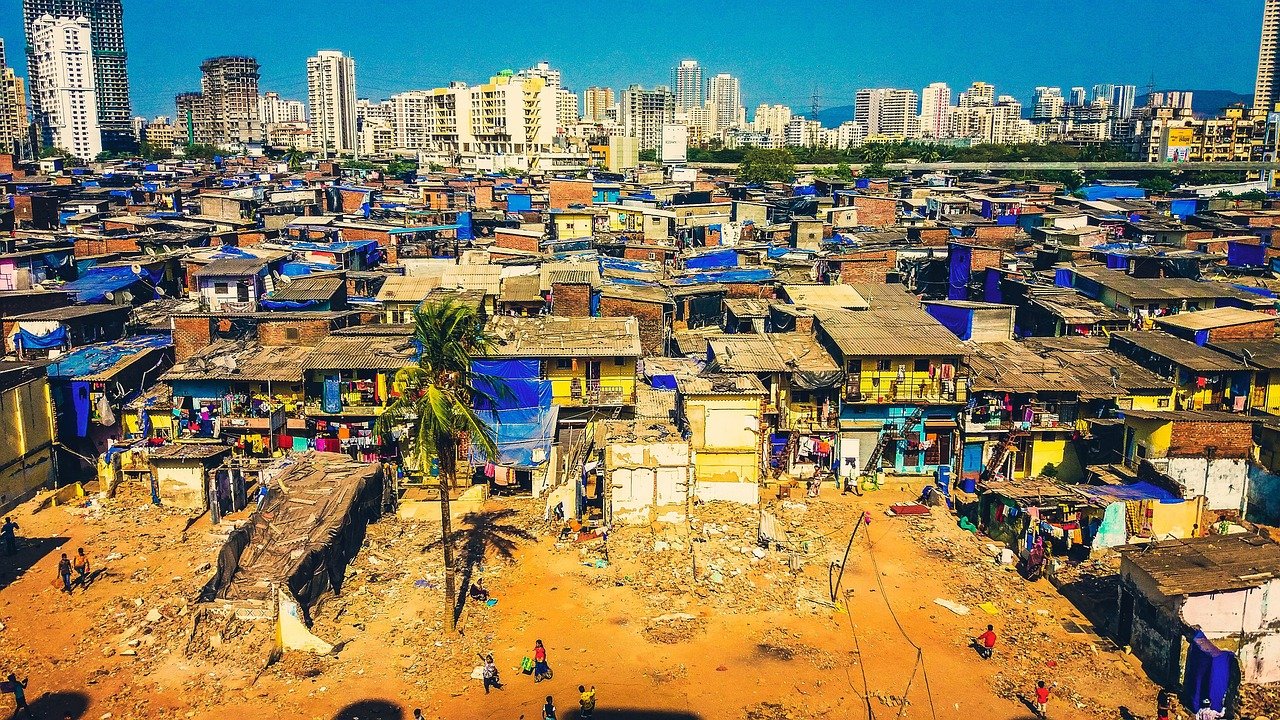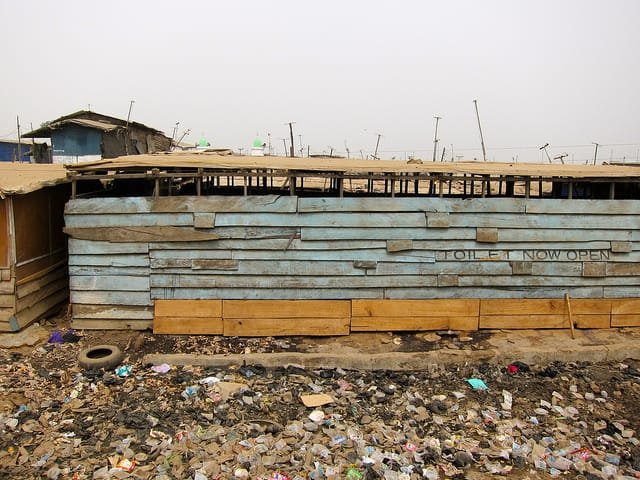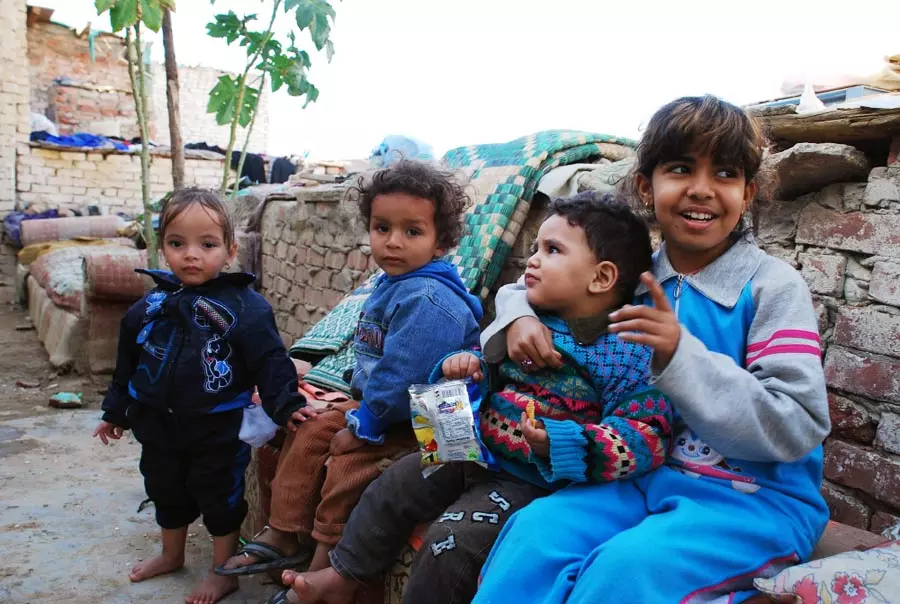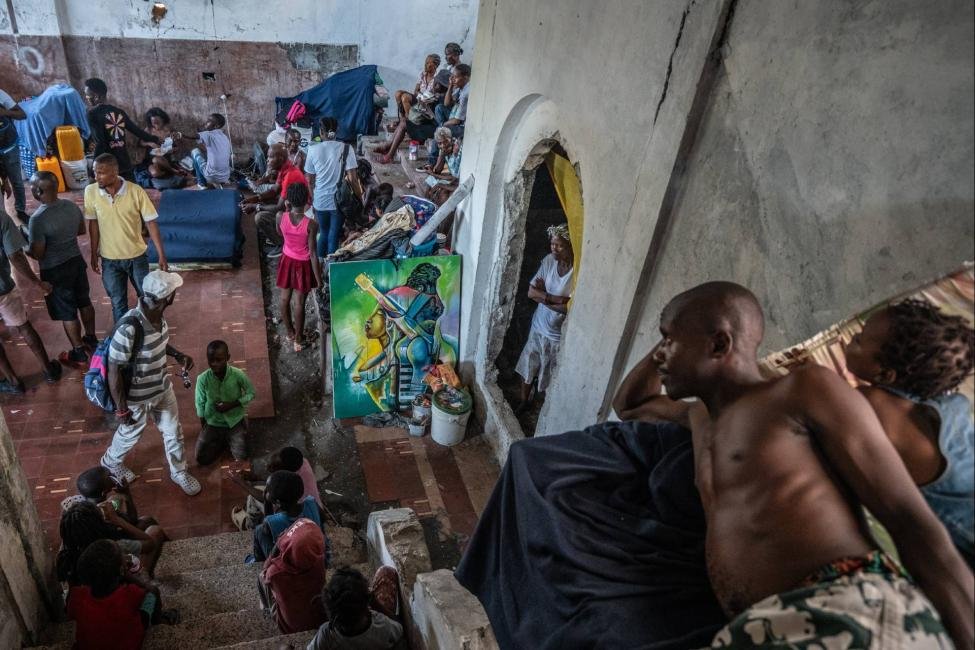
India’s urban areas have some of the world’s largest and most crowded slums where more than 65 million people live. These packed neighborhoods face crucial challenges in urban development, housing, and simple amenities. Mumbai’s Dharavi has become a key example to understand urban poverty and community strength.
The biggest Indian slums share many features with settlements like Kibera in Nairobi and Rocinha in Rio de Janeiro. A detailed look at ten major slums in different cities reveals their unique characteristics, living conditions, and development projects. Each area struggles with sanitation, housing, and community growth, yet shows remarkable economic activity and social structure.
Dharavi, Mumbai

Image Source: Wikipedia
Dharavi stands in Mumbai’s heart, and its journey from a fishing village to Asia’s largest slum reflects the city’s rapid urbanization. The area changed by a lot after the British built the Riwa Fort in 1737 [1]. The Koli fishing community made this region their home near Mahim Creek before these developments.
History and Background
A significant transformation occurred in the late 1800s when artisan communities made this settlement their home. The cultural fabric became rich and diverse as skilled craftspeople arrived from different regions – potters from Saurashtra, Muslim leather tanners from Tamil Nadu, and embroidery workers from Uttar Pradesh established their traditional crafts [2]. The Maharashtra government introduced the Slum Areas Act in 1971, which became a milestone decision that brought simple amenities like taps, toilets, and electrical connections to the area.
Population and Demographics
Dharavi spans 2.8 square kilometers and serves as home to a massive population ranging from 600,000 to 1 million residents. This densely populated area has become a prime real estate location, where even small shacks of 40 square feet can fetch prices up to Rs 10 lakh.
Economic Activities
Dharavi’s business ecosystem includes:
- Approximately 10,000 small-scale businesses
- An impressive 80% employment rate
- Annual turnover of about USD 1 billion
The slum bustles with diverse industries such as recycling, pottery, textile processing, and leather crafting. Women make up only 4-5% of the workforce [5]. These enterprises showcase remarkable resilience and entrepreneurial spirit despite tough living conditions. Their operations substantially contribute to Mumbai’s informal economy.
Bhalswa, Delhi

Image Source: The Probe
Bhalswa, a settlement in northwest Delhi, faces some of India’s worst environmental challenges. The area stretches across 6.7 square kilometers with more than 197,000 residents. This dense population puts immense pressure on the limited infrastructure and available resources.
Location and Size
Bhalswa Lake’s historic surroundings house the settlement, though the lake has shrunk to 84 acres because of encroachment from the neighboring dump yard [7]. The settlement’s proximity to National Highway 44 creates an ironic situation that amplifies its environmental challenges, as it shares space with one of Delhi’s largest waste disposal sites.
Living Conditions
The residents struggle with serious infrastructure problems, especially when they have limited water and poor sanitation. These challenges affect daily life:
- The groundwater contains contaminants that force residents to buy expensive bottled water
- Clean running water reaches homes only once every two days
- The area lacks proper roads, which stops emergency vehicles from reaching residents
Environmental Challenges
The Bhalswa landfill towers 53 meters high and creates severe environmental and health risks for the community. This massive site takes in about 22,000 tons of waste each day, which causes widespread contamination. The local residents struggle with frequent breathing problems, and their life expectancy has dropped by a lot – most people barely live beyond 50 years. Both groundwater and the nearby lake have become unsafe for household use due to toxic leachate seeping from the landfill.
Neza, Mexico City

Image Source: Reddit
Ciudad Nezahualcóyotl (Neza) represents a remarkable transformation of informal settlements in Mexico City’s metropolitan area. The settlement’s illegal development in the late 1940s evolved into Mexico’s tenth largest municipality.
Unique Features
Neza stands as a remarkable example of urban development on a former lake bed where residents reshaped alkaline, packed-down land into a vibrant urban area. This settlement has evolved into a home for 1.2 million residents and shows how informal communities can thrive. The area features a planned street grid with well-described plots, though residents occupied the land before the original infrastructure development.
Community Initiatives
Remarkable grassroots efforts have reshaped the scene of our community. Several significant developments stand out:
- Residents spearheaded infrastructure campaigns in the 1970s
- The community hosted water distribution systems
- Citizens collectively advocated for simple utilities and land titles
Urban Planning Challenges
We have a long way to go, but we can build on this progress in Neza’s urban development. Many homes lack consistent running water, and residents depend on water trucks that deliver supplies weekly to meet their simple needs. Limited infrastructure investment and bureaucratic obstacles have slowed the settlement’s growth. But the area stands out as a model for bottom-up development, and its flexible zoning rules have created a thriving micro-entrepreneurial ecosystem.
Orangi Town, Karachi

Image Source: Slum Dwellers International
Orangi Town stands as proof of community-driven urban development in Pakistan. This 75-year old informal settlement spans 22 square kilometers and houses over 2 million residents. Muslim refugees from India created this settlement in 1947, which has now transformed into a remarkable model of successful community-led development.
Infrastructure Development
The Orangi Pilot Project (OPP) reshaped the settlement’s infrastructure through its innovative community participation program since 1980. The project successfully served 92,184 families living in 6,134 lanes by 2001, reaching almost 90% of the settlement. Local residents invested USD 1.55 million in these infrastructure improvements, while the government contributed USD 1.30 million to support the initiative.
Social Issues
The settlement faces the most important challenges:
- Families live in cramped spaces of 25-40 square meters with 6-8 people per dwelling
- Children frequently leave school before completion
- Students struggle to access quality educational facilities
- Poor water access and sanitation create serious health risks for residents
Community-led Solutions
OPP’s soaring win comes from its unique community development approach. The project grew beyond simple sanitation and embraced health, credit, low-cost housing, and education programs. Community mobilization efforts helped residents build indoor toilets for 99,097 dwellings and install 1,647,000 feet of underground piped sanitation. The project’s philosophy champions complete self-financing for internal development that creates a stronger ownership sense among residents.
Kibera, Nairobi

Image Source: Kibera UK
Kibera stands out as one of Africa’s most challenging urban settlements that shows both the hardships and resilience of informal communities. The families here survive on less than $1 USD per day. This densely populated settlement faces the most important socio-economic challenges but continues to show a remarkable community spirit.
Education and Youth
Kenya introduced free primary education in 2003, but students still face barriers from extra costs such as uniforms and textbooks. Organizations like KCE provide significant support through their Education Center that features library facilities and evening study spaces. The situation remains challenging as 80% of young people cannot access quality education. This lack of access leads to high dropout rates and creates ongoing social problems.
Health Concerns
Kibera faces significant health challenges that affect its residents:
- The mortality rate among children under five remains four times higher than other population segments
- The region struggles with HIV/AIDS which impacts 12-15% of the total population
- Pneumonia and diarrheal diseases claim many young lives
- Residents suffer from waterborne illnesses due to scarce clean water access
NGO Involvement
A remarkable 511 non-governmental organizations operate in this settlement, ranking it among the world’s most NGO-concentrated regions. Local residents still struggle with daily survival despite significant NGO presence, as most survive on $1-2 per day. Government concerns led to increased direct organizational funding at the time of the 1990s [26]. Questions still linger about these interventions’ ability to work and create lasting positive change.
Khayelitsha, Cape Town

Image Source: Wikipedia
Khayelitsha, a 40 years old residential area created during apartheid, has evolved into one of Africa’s largest urban settlements. This South African township houses an estimated 2.4 million people and ranks second in size after Soweto. The name Khayelitsha translates to “new home” in isiXhosa.
Housing Situation
The settlement struggles with critical housing problems. Statistics show 75% of residents live in shacks. The housing crisis reveals these stark numbers:
- A massive backlog of 245,000 housing units
- A yearly demand of 16,000 new houses
- 64.4% of families make informal dwellings their home
- Residents lack simple amenities like water and sanitation
Crime and Security
The area’s crime rates substantially exceed national averages, creating serious safety concerns for residents. Local statistics show 354 murders annually, which means 90 per 100,000 people lose their lives to violence. This is a big deal as it means that the murder rate triples the national average of 31 per 100,000. The situation worsens with sexual crimes affecting 157 per 100,000 residents, surpassing the national rate of 125 per 100,000.
Social Development Programs
Cape Town runs several social development initiatives that support and work with local communities. These programs help improve food security, develop skills, and provide support to vulnerable people. A major project is the Khayelitsha Urban Renewal Program worth R1.5 billion, which delivers new housing in Mandela Park and improves infrastructure. The development offers new formal housing units priced between R307,000 and R417,000 to middle-income families.
Manshiet Nasser, Cairo

Image Source: The New Humanitarian
Manshiet Nasser, one of the Middle East’s most densely populated informal settlements, extends along Cairo’s eastern edge and ranks as the fourth largest slum in the world. With 1.5 million inhabitants, this settlement houses much of Cairo’s urban poor.
Historical Context
Families from Upper Egypt established the settlement in the mid-nineteenth century at the time British colonial powers imposed taxation on agricultural land [31]. These migrants chose the foot of the Mokattam hills and reshaped the scene of vacant land. Their settlement eventually became one of Africa’s most densely populated informal communities.
Urban Poverty
This settlement struggles with simple infrastructure and inadequate health services:
- Children under one year face a staggering 24% mortality rate
- Residents suffer from chest and kidney diseases because of constant pollution exposure
- The community lacks clean water, sewers, and reliable electricity
- The area’s population density stands three times higher than other informal settlements in Cairo
Government Interventions
Egypt’s government launched its first major initiatives in the early 1990s to develop resilient infrastructure. The German Development Agency (GIZ) and the Egyptian-Swiss Development Fund collaborated on several essential projects that included:
- Clean water network connections
- Sewage system installation
- Street lighting implementation
- Construction of health centers and primary schools
Political shifts have impacted the development momentum, but 30 civil society organizations continue to provide social support and educational opportunities actively.
Cité Soleil, Port-au-Prince

Image Source: International Organization for Migration
Cité Soleil ranks among the most dangerous areas in the Western Hemisphere and demonstrates how political instability, poverty, and humanitarian crisis intersect. Between 200,000 to 400,000 residents live in this densely populated commune of Port-au-Prince and face unprecedented challenges daily.
Political Instability
Armed gangs have torn apart the area’s governance system, where 30 armed factions now control various territories. Violence reached new heights with 471 casualties during a deadly period between July 8-17, 2022. The settlement’s security situation remains volatile as state authorities have lost control, allowing gangs to establish their own “territories.” These developments affect residents’ daily lives significantly.
Humanitarian Crises
The settlement struggles with devastating humanitarian challenges:
- Residents cannot access safe drinking water and proper sanitation
- 60-70% of households lack simple latrines
- Healthcare remains out of reach for most inhabitants
- A staggering 3,000 residents live in displacement, with hundreds of children separated from their families
International Aid Efforts
Major humanitarian agencies and the United Nations have launched detailed aid programs worldwide. The World Food Program provides food supplies that feed 7,000 people each week. UNICEF supports these efforts by delivering 312,000 liters of drinking water. The settlement faces ongoing challenges with simple service delivery, which reflects deeper issues of urban poverty and political instability.
Tondo, Manila

Image Source: Not Another Backpacker Reiseblog
Tondo spans 9 square kilometers on Metro Manila’s outskirts and houses an estimated 750,000 people, which makes it one of the world’s most densely populated urban informal settlements. This district shows the complex challenges that rapid urbanization brings to Southeast Asia.
Overcrowding Issues
Baseco’s registered population of 60,000 represents only a fraction of its actual inhabitants. The area now houses approximately 150,000 people. This extreme overcrowding guides the settlement toward systemic infrastructure problems. Residents struggle daily to access simple services such as waste disposal and clean water.
Livelihood Opportunities
Local residents support their families through several economic activities:
- Construction jobs and informal transportation work
- Street vending that yields PHP 80 (USD 1.53) daily
- Garlic processing industry where workers peel 15kg sacks each day
- Community programs like Better World Tondo food bank
Resilience of Residents
The community shows remarkable resilience despite floods and fires that strike five times annually. The Family Budget and Savings Program helps families know how to bounce back from disasters. Residents have created strong support networks through community-led initiatives. Their volunteer cooking programs now serve 400 primary school students each day.
Rocinha, Rio de Janeiro

Image Source: Wikipedia
Rocinha, Brazil’s largest favela, towers over Rio de Janeiro’s southern zone. This vibrant urban community evolved from a modest rural settlement in 1929 and now houses more than 300,000 residents. The community’s remarkable resilience and organization challenge traditional perceptions of informal settlements.
Favela Tourism
Rocinha leads the way with sustainable tourism programs that benefit the local economy and protect the community’s dignity. The vibrant settlement welcomes visitors with:
- Cultural experiences led by local residents
- Art exhibitions and traditional capoeira shows
- Local restaurants and artisan shops run by community members
- Community networks coordinated through WhatsApp
Infrastructure Improvements
The settlement has reached major development milestones. Most homes now have basic sanitation, plumbing, and electricity. Banks, pharmacies, and cable television networks serve the community’s needs. A smart urban management system coordinates services of all types, from street lighting to waste management.
Social Integration Efforts
Rocinha’s social fabric has experienced a remarkable transformation through its community-led initiatives. The settlement buzzes with life as residents have created an impressive self-organized system. Local entrepreneurs run various businesses from food markets to educational centers that are the foundations of a thriving economic ecosystem. The community shows incredible adaptability with business spaces that operate within tight constraints – all but one of these commercial spaces have a street façade of 8 meters.
Conclusion
Ten major informal settlements house millions of people worldwide. These communities showcase human resilience in the face of urban poverty challenges. Each settlement has found unique ways to overcome infrastructure shortages. Dharavi runs a billion-dollar informal economy while Orangi Town leads community sanitation projects. Local initiatives and entrepreneurial activities have helped these communities create innovative solutions despite serious challenges in healthcare, education, and essential amenities.
These settlements teach valuable lessons about urban development and poverty reduction worldwide. Their journey shows why cities need comprehensive solutions that combine better infrastructure with economic opportunities. The residents must actively participate to strengthen their communities. Success stories across settlements demonstrate that urban development needs government backing and mutually beneficial alliances with development organizations. These communities shape how we view informal settlements today and highlight why cities need inclusive planning strategies.
FAQs
What are some of the major slums located in India?
India is home to several of the world’s largest slums, including Dharavi in Mumbai, Bhalswa in Delhi, Nochikuppam in Chennai, Rajendra Nagar in Bangalore, and Basanti in Kolkata.
Where can you find the 10 largest slums globally?
The largest slums in the world are located in various countries, including Khayelitsha in Cape Town, South Africa with a population of 400,000; Kibera in Nairobi, Kenya with 700,000 residents; Dharavi in Mumbai, India housing 1,000,000 people; Neza in Mexico with 1,200,000 inhabitants; and Orangi Town in Karachi, Pakistan, which is the largest with 2,400,000 residents.
What are the main slum areas in Mumbai?
Mumbai’s notable slum areas include Dharavi, Mankhurd, Ghatkopar, Sion-Koliwada, Worli-BDD Chawls, and Malvani.


